Pool algae can be a persistent problem for many pool owners, and many people turn to household cleaners such as bleach in an attempt to eradicate it. But does bleach actually work to kill algae?
If you have algae in your pool, the way to kill it is by using chlorine shock. Bleach is a relatively weak chlorine shock solution, so it will kill pool algae if a sufficient amount is used, but it may not be the best idea.
In this article, we will be discussing the pros and cons of using bleach in a pool as an algae treatment, as well as exploring alternative methods for getting rid of algae in your pool.
Quick Answer
Can you shock a pool with bleach? While bleach can be used to shock a pool, it’s essential to note that pool shock products specifically formulated for this purpose are widely available. These products often contain a higher concentration of chlorine, making them more efficient and effective in sanitizing your pool. Therefore, if possible, using a pool shock product designed explicitly for pool maintenance is recommended.
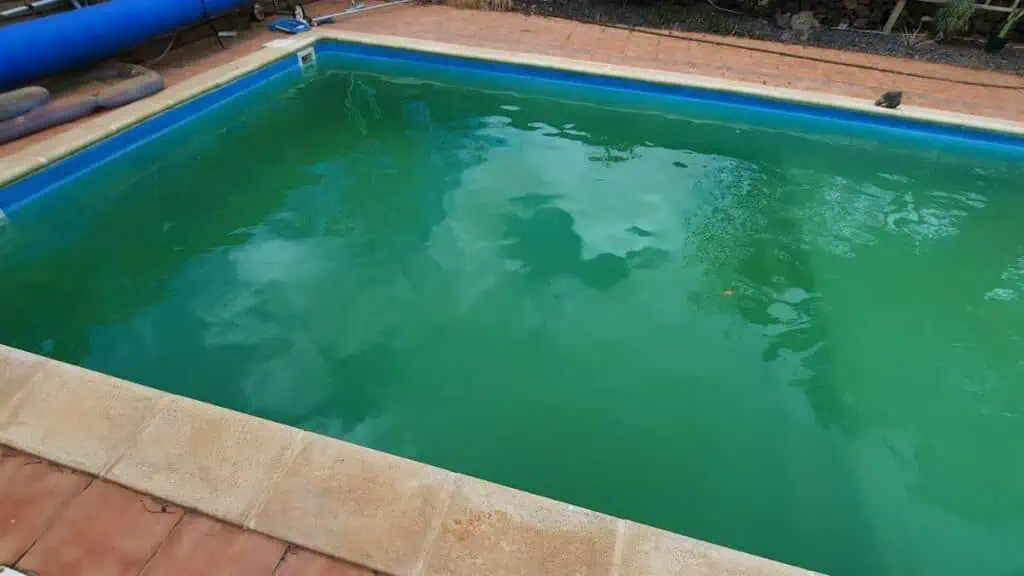
Can you put bleach in a pool instead of chlorine?
Bleach is a chlorine solution, so it has that in common with liquid chlorine, which you can buy in pool stores to shock a pool and get rid of algae.
Liquid chlorine is normally between 10% and 13% in strength. However, when compared to liquid chlorine, bleaches are normally a much weaker chlorine solution of up to 5-6% and even just 3% in some cases.
You can see then that you will need to use twice or even four times as much bleach to achieve the same results as liquid chlorine. That will often make it uneconomical to use.
But does bleach kill algae in a pool? Yes, it will be effective in killing algae in your pool if you use sufficient of it.
Also, there is a possibility that particular types of bleaches will include some form of perfume, which would obviously not be a great idea to add to your pool.
Can I use bleach to shock a pool?
As stated above, although bleach is a less concentrated chlorine solution than liquid chlorine, it can nevertheless be used as a pool shock.
You will normally need to add more bleach to achieve the same results as you would using liquid chlorine.
How to use bleach to shock a pool
Fortunately, getting rid of algae is not rocket science, although it does require some time and effort to carry out the process properly.
Will bleach kill algae in a pool? Removing algae can be done using bleach through a process known as shocking.
Shocking means temporarily increasing the chlorine level in the pool to kill any contaminants, including algae. This is also known as superchlorinating.
To shock your pool properly, a series of steps must first be followed:
Step 1: Check your water chemical levels
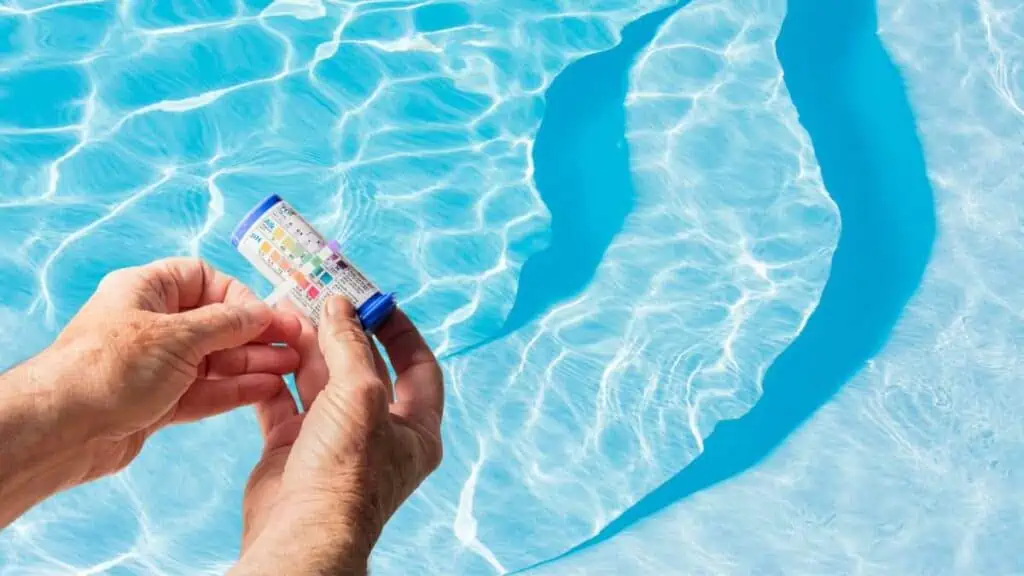
The first step is to check the various chemical levels of your pool water. This is important as if you have improper water balance it can make the bleach ineffective at doing its job and killing the algae. This will only lead to a continuation of the problem and result in wasted time and effort.
To check your water, we recommend that you get a proper water testing kit (either a liquid test kit or test strips), which can give you a wealth of information regarding the state of the water in the pool. Good test strips, such as the Aquacheck 7-way test strips that I use, can tell you the total chlorine, free chlorine, pH, total alkalinity, CYA and hardness levels.
Recommended Test Strips
Check the pH reading
The ideal pH range is between 7.2 and 7.8. Outside this range can affect the ability of the chlorine to sanitize the pool water.
- If the pH is below 7.2 (by more than a point or two), then it means it is too acidic. To raise the pH you should add either baking soda or soda ash. Read: How to raise the pH in a pool
- If the pH is above 7.8, meaning it is too alkaline, then you need to add an acid (usually muriatic acid). Read: How to lower the pH in a pool
Chlorine reading
It is likely that when you check the free chlorine levels, you will find that this is low. In this case, adding bleach to shock the pool will increase it.
However, if the chlorine levels are high yet you still have a green pool, then either:
- You will see the total chlorine is high, but the free chlorine is low. This will mean that the existing chlorine has been combined with contaminants, so it is no longer available to kill algae.
- You may have plenty of free chlorine, but the pH may have been outside the best range, meaning the chlorine cannot work effectively. If this is the case, you will hopefully solve this problem by following the instructions above.
It is the free chlorine that kills the algae so you need to free up some chlorine. Read: Chlorine is high but my pool is green to see how to solve this.
Step 2: Brushing the surfaces
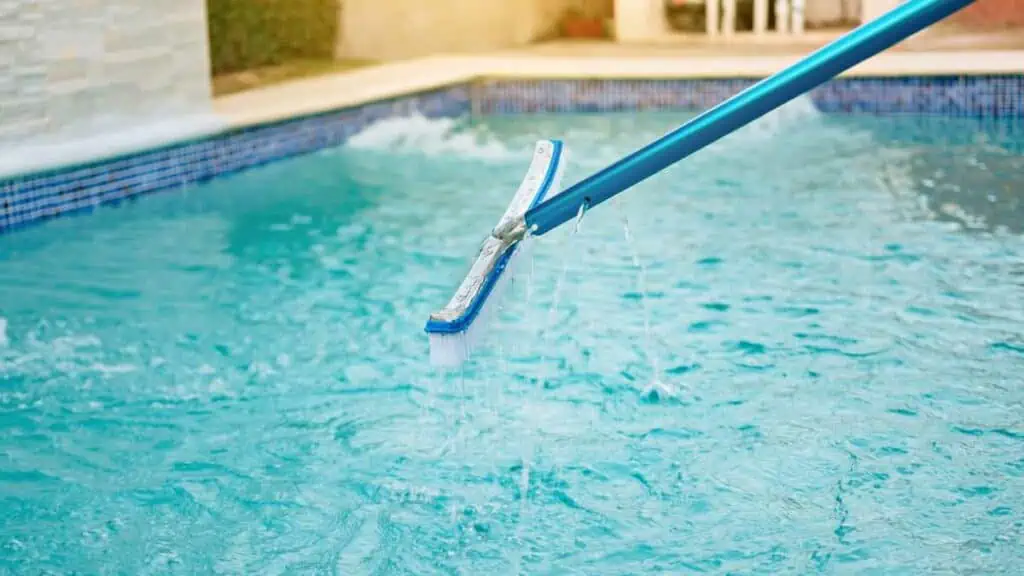
Although algae also float in pool water, turning it green, algae cling to all surfaces of the pool, such as the bottom, the sides, steps and pool ladders. These algae are more difficult for chlorine to kill than floating algae.
So, to make life easier for the chlorine, you should thoroughly scrub these surfaces with a pool brush, taking particular care in corners etc. This will put the algae into suspension in the water so that the chlorine can kill them when you shock them.
Step 3: Adding the bleach
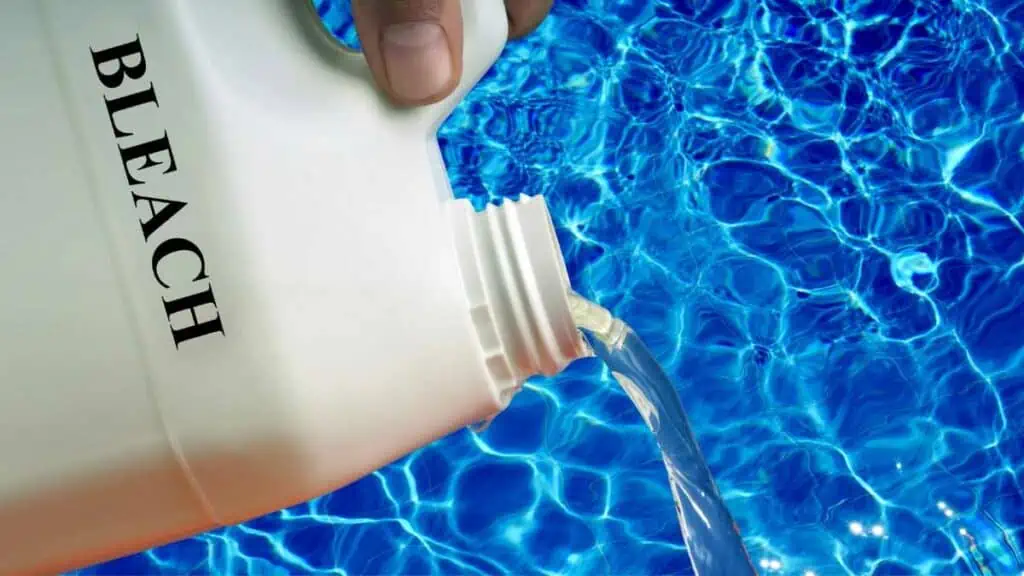
Obviously, you need to know how much bleach is needed to shock a pool.
You should pour at least 2 gallons of bleach into the pool for every 10,000 gallons of water in order to try and kill the algae and get rid of your green pool water.
I always try to shock my pool in the evening and then let the pool pump run all night to ensure that the pool shock (bleach) is distributed around the pool evenly. Sunlight (UV radiation) degrades chlorine quite quickly, so by shocking overnight, the chlorine will have a better chance of working.
Step 4. Vacuum the pool
The next day, hopefully, your pool will no longer be green. If it is, then you need to repeat the shock treatment.
Assuming it is now clear, you should see that there are dead algae on the bottom of the pool (probably brown rather than green now). You will need to vacuum to waste in order to remove this algae dust.
Read: How to remove algae dust from a pool
Can you put bleach in a vinyl pool?
Bleach could potentially damage your pool’s vinyl liner, but only if applied directly to the liner. In that case, the liner’s color may become bleached.
However, if bleach is simply added to the pool’s water, then it will not cause any damage to the liner unless you were to add a great deal of bleach, of course.
Summary
“Can I use bleach to shock my pool?” the answer is yes, but with caution. It is crucial to carefully follow proper dosage calculations and select bleach that is free of additives.
However, for optimal results, consider using pool shock products specifically designed for the purpose of maintaining and sanitizing swimming pools.
How long after adding bleach to pool can you swim?
You should not swim in a pool that has been shocked with bleach for a minimum of 4-8 hours. You should check the chlorib¡ne level with a test strip and not swim until the chlorine level has gone down to normal.
Is chlorine and bleach the same thing?
Bleach contains chlorine in a fairly weak solution (3-6% chlorine) but liquid chlorine is normally at least double that in strength (12-13% chlorine).
Will bleach clear a green pool?
Since bleach is a chlorine solution, adding bleach to a pool in the correct amount will help clear a green pool.


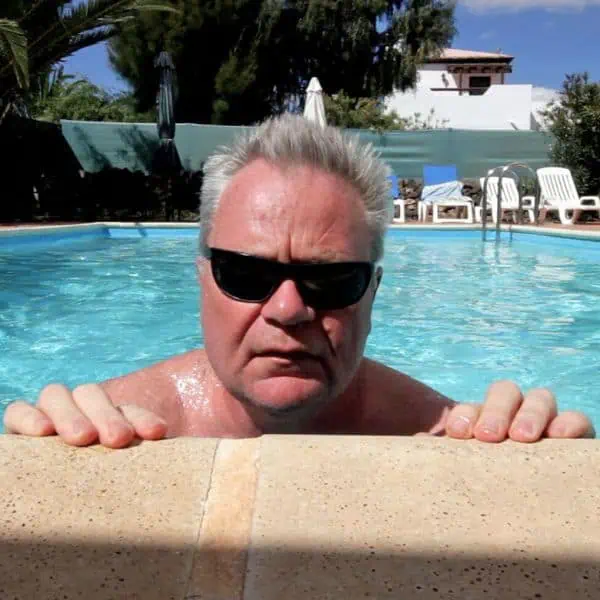


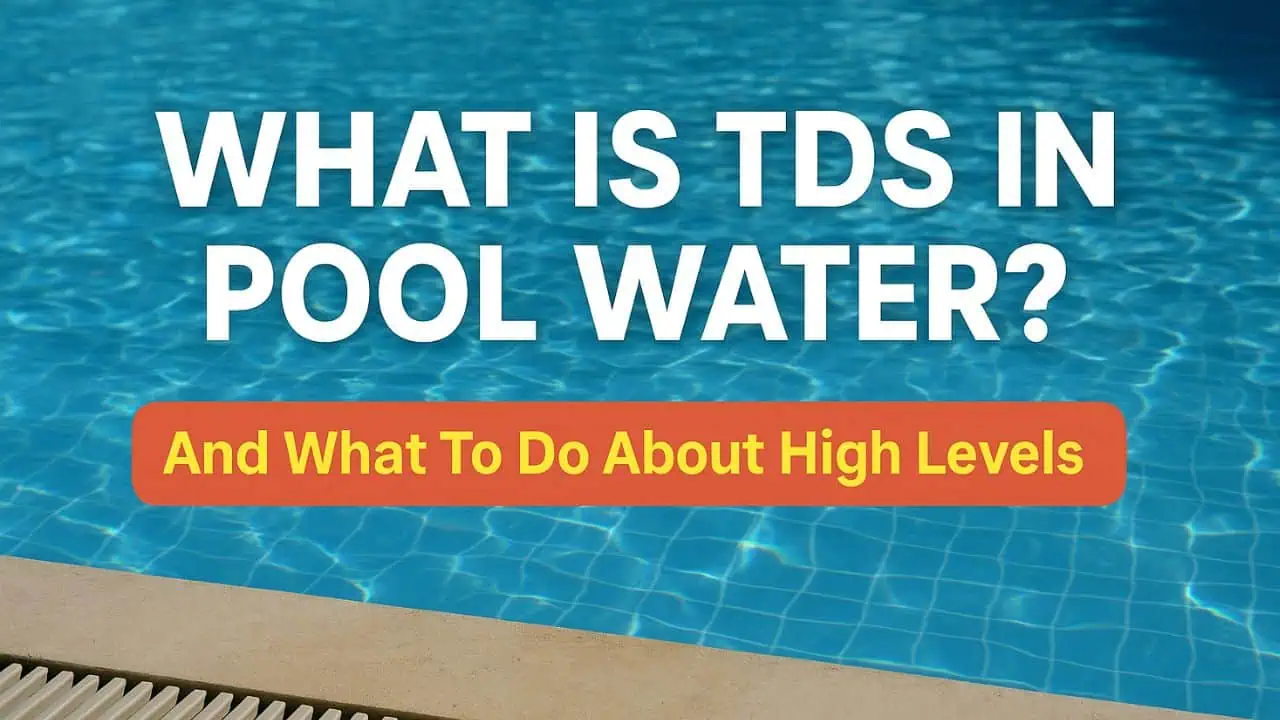
Leave a Reply